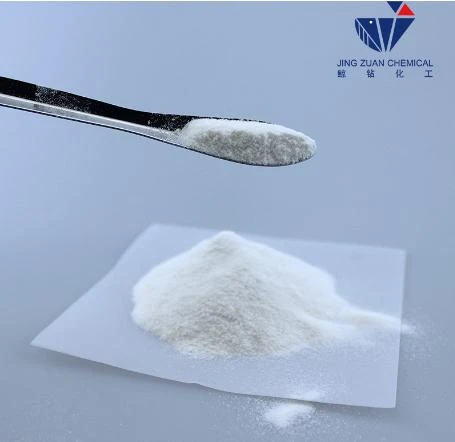
Nov . 09, 2024 16:08 Back to list
Hydroxyethyl Cellulose Composition and Applications in Various Industries and Products
Understanding Hydroxyethyl Cellulose (HEC) Composition and Applications
Hydroxyethyl cellulose (HEC) is a non-ionic, water-soluble polymer that has garnered significant attention in various industries due to its unique properties. Derived from cellulose, which is a natural polymer found in the cell walls of plants, HEC is synthesized by the etherification of cellulose with ethylene oxide. This modification enhances its solubility in water and provides beneficial rheological properties, making it an essential additive in numerous applications.
Chemical Structure and Properties
The core structure of HEC is based on the cellulose backbone, which consists of repeating units of anhydro-glucose. The introduction of hydroxyethyl groups onto the cellulose chain results in a highly branched polymer. The degree of substitution and the molecular weight of HEC can be modified during synthesis, allowing for tailored properties for specific applications. The presence of hydrophilic hydroxyethyl groups allows HEC to dissolve in cold or hot water, forming a viscous gel that is stable over a wide range of pH levels.
HEC exhibits several noteworthy properties, including excellent thickening capability, film-forming ability, and emulsification. Its non-ionic nature and resistance to electrolytes contribute to its stability in various formulations. HEC also retains its viscosity under temperature changes, a characteristic that is especially valuable in applications like cosmetics and pharmaceuticals.
Industrial Applications
One of the primary areas where HEC is used is in the construction industry. It serves as a key ingredient in products like cement-based formulations, tile adhesives, and paints. HEC improves the workability and adhesion of these materials by providing better water retention and preventing premature drying. This property is crucial for ensuring that construction materials maintain optimal performance during application.
hydroxyethyl cellulose formula

In the realm of personal care and cosmetics, HEC is valued for its thickening and stabilizing properties. It is commonly found in lotions, shampoos, and creams, helping to create a consistent and pleasing texture while also enhancing the product’s ability to adhere to the skin or hair. HEC’s film-forming capabilities are beneficial for creating protective layers in topical formulations, aiding in moisture retention and enhancing the product's overall efficacy.
Pharmaceutical applications of HEC include its use as a binder and thickener in oral and topical medications. In oral formulations, HEC enhances the viscosity of solutions, contributing to improved bioavailability of active ingredients. In topical preparations, it acts as a stabilizing agent, ensuring that active components remain evenly distributed throughout the formulation.
Environmental and Safety Considerations
HEC is derived from natural cellulose, making it biodegradable and an environmentally friendly option compared to synthetic alternatives. Its non-toxic nature also makes it safe for use in food and pharmaceutical products. However, as with any chemical, it is essential to follow regulatory guidelines for its application, ensuring that it meets safety standards for consumers and the environment.
Conclusion
Hydroxyethyl cellulose is a versatile and valuable additive across multiple industries due to its unique properties and eco-friendly nature. From improving the performance of construction materials to enhancing the texture and stability of personal care products, HEC plays an essential role in modern formulations. As industries continue to seek sustainable and effective solutions, HEC is likely to remain a crucial component in the development of innovative products, highlighting the importance of natural derivatives in contemporary applications. Understanding the chemical formula and functional characteristics of HEC can lead to further advancements in various sectors, making it a compound of great interest for both researchers and manufacturers alike.
-
Versatile Hpmc Uses in Different Industries
NewsJun.19,2025
-
Redispersible Powder's Role in Enhancing Durability of Construction Products
NewsJun.19,2025
-
Hydroxyethyl Cellulose Applications Driving Green Industrial Processes
NewsJun.19,2025
-
Exploring Different Redispersible Polymer Powder
NewsJun.19,2025
-
Choosing the Right Mortar Bonding Agent
NewsJun.19,2025
-
Applications and Significance of China Hpmc in Modern Industries
NewsJun.19,2025







